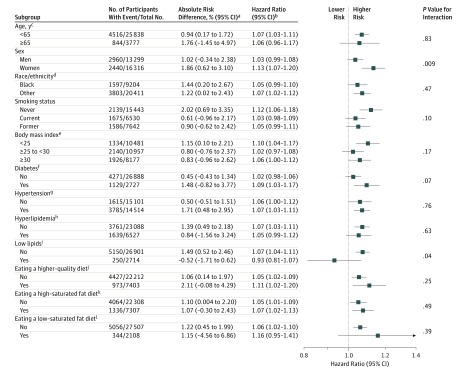Figure 7. Association Between Each Additional Half an Egg Consumed per Day and Incident CVD Among Different Subgroups.
See the Figure 1 footnote for conditions included in the incident cardiovascular disease (CVD) definition. Adjustment covariates included age, sex, race/ethnicity (white, black, Hispanic, Chinese), education (<high school, high school, ≥some college), total energy, smoking status (current, former, never), smoking pack-years (0, 0.1-4.9, 5.0-9.9, 10-19.9, 20-29.9, 30-39.9, ≥40), cohort-specific physical activity z score, alcohol consumption (gram), and use of hormone therapy (y/n), where relevant. Mean egg consumption in the United States was approximately half an egg per day, based on the National Health and Nutrition Examination Survey 2011-2012 data.28 The results can be interpreted using the following sex-specific estimates as an example: in men, each additional half an egg consumed per day was not significantly associated with a higher relative risk (RR) of incident CVD (adjusted hazard ratio [HR], 1.03 [95% CI, 0.99-1.08]) and a higher absolute risk of incident CVD (adjusted absolute risk difference [ARD], 1.02% [95% CI, −0.34% to 2.38%]) over a follow-up of 30 years. In women, each additional half an egg consumed per day was significantly associated with a higher RR of incident CVD (adjusted HR, 1.13 [95% CI, 1.07-1.20]) and a higher absolute risk of incident CVD (adjusted ARD, 1.86% [95% CI, 0.62%-3.10%]) over a follow-up of 30 years. The association was stronger in women than in men (P value for interaction = .009).
aAbsolute risk difference was estimated using 3 R packages: riskRegression,33 survival,34 and pec,35 and 95% CIs were derived from 100 bootstrap samples. A follow-up time of 30 years (not all subgroups had the maximum follow-up of 31.3 years), mean of the included covariates, and a difference of half an egg per day consumed were used.
bCohort-stratified cause-specific hazard models were used for incident CVD.
cThe maximum follow-up time for the older group was 22.8 years. All other subgroups used 30 years as specified in footnote “a.”
dHispanic and Chinese participants were combined with white participants (all categorized as other) due to small sample size.
eBody mass index was calculated as weight in kilograms divided by height in meters squared.
fFasting glucose (≥126 mg/dL) or HbA1c (≥6.5%) or taking glucose-lowering medications.
gBlood pressure (≥140/90 mm Hg) or taking antihypertensive medications.
hTotal cholesterol (≥240 mg/dL) or taking lipid-lowering medications.
iLow-density lipoprotein cholesterol (<70 mg/dL) or non-high density lipoprotein cholesterol (<100 mg/dL) among those who did not take lipid-lowering medications.
jAlternate Healthy Eating Index (aHEI) 2010 score in the highest quartile (≥51.5). The original version of the aHEI-2010 score has a range of 0 to 110 points, but the score in this study had a range of 0 to 100 points due to the removal of the meat item.
kPercent of energy consumed from saturated fat in the highest quartile (≥13.8%).
lPercent of energy consumed from saturated fat (<7%).

